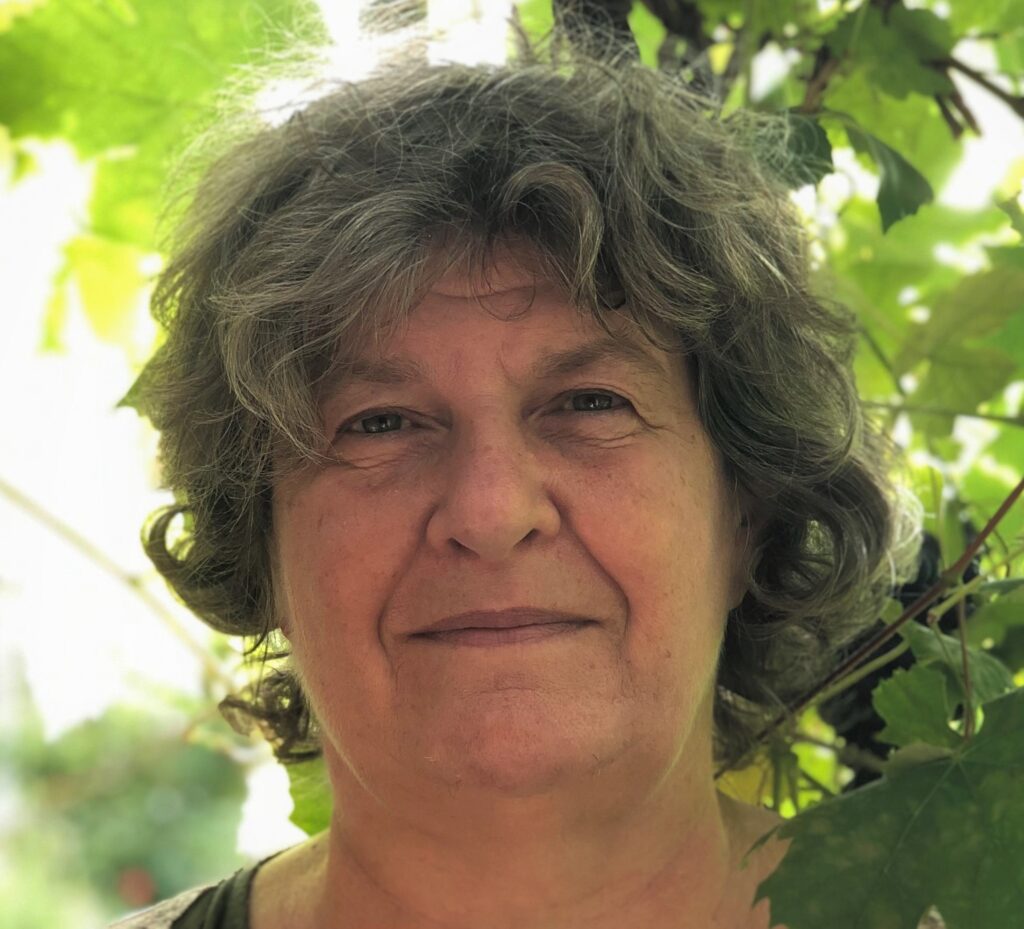23 December 2022
A project which aims to help differentiate between atopic dermatitis and Cutaneous T-cell lymphoma – a cancer of white blood cells, investigation into the common skin disease Ichthyosis, and insights into sebaceous glands which are critical for the physiological balance and barrier function of our skin. The LEO Foundation awards DKK 23 million (EUR 3 million) in the latest round of research grants in open competition.
Eight exciting new projects have received grants from the LEO Foundation and are to place a wide range of focuses on skin diseases and the bettering of their understanding. The projects are headed by eight inspiring scientists from all over the world, who each provide their stirring motivations for progressing research.
Three grantees hail from Danish universities in this round, representing three separate institutions – Aarhus University, University of Copenhagen, and University of Southern Denmark. The round also sees a previously funded project receive a second grant, as Richard Granstein, from Weill Medical College of Cornell University in USA, continues research into the role of calcitonin gene-related peptide (CGRP) in regulating skin immunity.
Spain and Germany are also represented in the latest round, Xavier Gasull hailing from Fundació Clínic per a la Recerca Biomèdica (FCRB) in Spain – Xavier is also a Professor at the University of Barcelona. A further two grantees hail from Germany – Michael Bader and Catherin Niemann, from Max-Delbrück-Center for Molecular Medicine and University of Cologne respectively.
This latest round of research grants marks over DKK 416 million (EUR 55 million) given in independent research grants to scientists around the world since 2016, dedicated to improving the understanding and treatment of skin diseases.
A glance into the projects
Three of the eight projects include those from Larisa Geskin, Lotte K. Vogel and Catherin Niemann, who each propose to expand varying insights into skin diseases.
Larisa Geskin from Columbia University USA, is one scientist to receive a grant in the latest round as she proposes important exploration of blood-borne biomarkers to differentiate between atopic dermatitis (AD) and Cutaneous T-cell lymphoma (CTCL), a cancer of the white blood cells, which can often look like AD. Through her project, Larisa hopes to help develop a screening test for patients with AD to assure better identification of undiagnosed CTCL in such patients. If successful Larisa’s project paves the way for providing a simple and inexpensive test for a great number of physicians, before beginning therapy for AD.
Alternatively, Lotte K. Vogel from the University of Copenhagen in Denmark proposes investigation into the common skin disease Ichthyosis, which causes “fish-scale” like skin in patients. There are unfortunately currently poor treatment options for this debilitating disease, and the molecular mechanisms behind Ichthyosis are not well understood. With her project, Lotte explores variations in genes which may cause the skin disease. If successful, Lotte and her team stand to make an original contribution to understanding Ichthyosis, improving opportunity for developing treatment options.
Sebaceous glands (SGs) are highly important for the physiological balance and barrier function of our skin, and with her project, Catherin Niemann hopes to provide novel understanding of the main drivers of normal SG function – which otherwise remain incompletely understood. SG dysfunction is unfortunately associated with a variety of skin diseases, including acne. The long-term goal of Catherin’s project is to therefore shed light on the central mechanisms of SG regulation and establish a means of testing new therapeutic strategies for SG disorders.
Read more about all eight research projects below and gain an understanding of each of their impacts upon the global scene of dermatology.
Catherin Niemann
Principal Investigator, University of Cologne, Germany, DKK 2.6m

Deciphering the mechanisms of sebaceous gland stem cell renewal and differentiation
The aim of Catherin Niemann’s project is to understand the biologic events during sebaceous gland differentiation, tissue remodeling, and regeneration.
Sebaceous glands (SGs) are critical for the physiological balance and barrier function of mammalian skin. SG dysfunction is associated with a variety of skin diseases, including acne. Despite recent advances using mutant mouse models with SG defects, the main drivers of normal SG functions remain incompletely understood. Therefore, a better understanding of how SG physiology and sebum production (an oily mixture produced by sebocytes, cells of the sebaceous gland) are regulated, is a clinical necessity.
Using both in vivo and in vitro models, Catherin’s project will focus on the regulation of SG stem cells, which are the primary responders to stimuli at the interface with the tissue environment. In vivo, Catherin and her team will use a combination of genetic mouse models and high throughput technologies to identify key players controlling normal SG activity. In vitro, the team has developed a 3D cell culture model that will be modelled to mimic SG differentiation to uncover and validate the central mechanisms of SG regulation. This SG-organoid model will be especially beneficial to decipher the specific role of extra-cellular matrix components in SG physiology and to examine the interaction with other cell types, including immune cells, for their impact on SG cell differentiation and contribution to SG defects in disease settings.
The long-term goal of the project is to establish a platform for testing new therapeutic strategies for the treatment of SG disorders.
Gregers Andersen
Professor, Aarhus University, Denmark, DKK 1.7m

Structure and modulation of the integrin receptor αMβ2 in relation to SLE
Gregers Andersen’s project aims to understand the role of disease-related mutations of a central inflammation-regulating protein on immune cells in systemic lupus erythematosus (SLE).
Systemic lupus erythematosus is a severe autoimmune disease in which our immune system is erroneously activated. This leads to inflammation that may destroy tissue, such as the kidney. SLE often manifests itself with visible skin rashes that are difficult to treat and debilitating for the patient. Current options for treatment of SLE are insufficient and still rely heavily on steroids as the mainstay of treatment.
Both environmental and genetic factors contribute to SLE pathogenesis. The strongest association between SLE and the information encoded in our genetic material is observed for a specific mutation in a gene called ITGAM. This gene codes for a protein called αMβ2 located at the surface of our immune cells. When the αMβ2 protein recognizes specific proteins on other cells, the immune cell contributes to dampening inflammation. When the ITGAM gene is mutated, the immune cells are less efficient in suppressing inflammation.
Using the most powerful microscope available, Gregers’ research project will investigate in atomic detail how the mutation interferes with the normal function of the αMβ2 protein. Furthermore, the effects of a new antibody capable of increasing the activity of αMβ2 will be exhaustively investigated. Experiments comparing the effects of this antibody on immune cells from healthy and SLE individuals will be central in deciding whether the antibody is a candidate for a new type of therapeutic agent.
Larisa Geskin
Professor, Columbia University, USA, DKK 3.6m

Development of theragnostic approach to atopic dermatitis
Cutaneous T-cell lymphoma (CTCL), a cancer of white blood cells, can look like atopic dermatitis. This project from Larisa Geskin aims to develop and validate a screening test for patients with atopic dermatitis (AD) which will aid in identifying undiagnosed CTCL in these patients.
Interleukin-4 (IL-4) and interleukin-13 (IL-13) are essential cytokines (i.e., signaling molecules released from cells to the environment in order to affect other cells), in the pathogenesis of AD. Targeting these cytokines with antibodies such as dupilumab or tralokinumab has proven to be highly effective for therapy of AD.
However, patients with AD may have an increased risk for lymphoma, especially CTCL. There are numerous reports of patients with AD who received dupilumab and later developed CTCL, lethal in some cases. Therefore, therapies targeting IL-4/IL-13 are currently contraindicated for patients with CTCL. However, differentiation between AD and CTCL is difficult because of similar manifestations in the skin and lack of specific markers (i.e., molecules that are uniquely present or expressed in a given condition) for these diseases.
In their preliminary studies Larisa and her team have screened the blood of patients with biopsy-confirmed CTCL and AD for 18 highly selected potential biomarkers using an efficient screening method. Of the 18 tested biomarkers, 9 demonstrated sensitivity and specificity potentially adequate to differentiate CTCL from benign dermatoses. These data serve as a proof of principle and justify further studies, as described in this proposed project, to test a broader set of biomarkers to find the most promising biomarker panel with the highest sensitivity and specificity to develop a simple, robust and inexpensive test, which may be widely accessible to all treating physicians before initiating therapy for AD.
Lotte K. Vogel
Associate Professor, University of Copenhagen, Denmark, DKK 3m

Treatment of ichthyosis with enzyme replacement therapy
This project led by Lotte K. Vogel aims to elucidate the role of the protease matriptase (an enzyme that cleaves proteins) in a variant of Ichthyosis, a common skin disease that causes “fish-scale” like skin with poor treatment options.
The molecular mechanisms behind ichthyosis are not understood, but variations in several genes may cause ichthyosis. Variants of the ST14 gene, which encode the serine protease matriptase, lead to a type of ichthyosis called Autosomal Recessive Congenital Ichthyosis 11 (ARCI11). The prevalence of ARCI11 is elusive at present.
Lotte and her team’s preliminary data show that ARCI11-related matriptase variants are unable to activate a certain substrate (a protease on its own), suggesting that ARCI11 is caused by a lack of activation of this protease. Results from the group also suggest that inactivation of a certain enzyme cascade leads to Ichthyosis. Surprisingly, for several enzymes in this cascade both the zymogen form and the activated form of the enzyme exhibit proteolytic activity.
In this project, Lotte aims to investigate the importance of matriptase in ARCI11 through a three-pronged approach: (1) by elucidating whether a protease located downstream of matriptase in the same pathway can be activated by an appropriate soluble enzyme which is suitable for topical application to the skin. (2) by elucidating whether ARCI11 is caused by a difference in substrate preferences between the zymogen form and the activated form of these enzymes and (3) by systematically screening for genetic variants of matriptase causing ARCI11 and estimating their frequency in the population. The genetic material to do a more systematic search for ARCI11-causing variants of matriptase and estimate their frequency Is already available.
If successful, Lotte’s project will make a solid and original contribution to the understanding of ichthyosis that may lead to improved treatment options.
Michael Bader
Professor, Max-Delbrück-Center for Molecular Medicine, Germany , DKK 3.9m

Stabilization of α-melanocyte stimulating hormone (α-MSH) for the therapy of dermatological diseases
Michael Bader’s project aims to develop novel angiotensin-converting enzyme 2 (ACE2) inhibitors to be applied to the skin for treating inflammatory skin diseases.
Alpha-melanocyte-stimulating hormone (α-MSH) acting through its receptor, melanocortin 1 receptor (MC1R), is the most important regulator of melanogenesis (i.e., the production of melanin, the pigment of the skin) and also exerts significant anti-inflammatory actions in the skin. Therefore, MC1R may be a significant treatment target for inflammatory skin diseases and for prevention of melanoma, and several agonists are already clinically approved or currently being developed.
Michael and his group have discovered that ACE2 limits melanogenesis in mouse and human skin by degrading α-MSH. Thus, ACE2 inhibition in the skin may be a novel strategy for dermatological diseases by stabilizing α-MSH and thereby activating MC1R.
However, ACE2 is also a protective enzyme in the circulation limiting the actions of the blood pressure regulatory system, the renin-angiotensin system. Therefore, systemic inhibition of ACE2 may cause severe side-effects, making topical application of ACE2-inhibitors preferable.
Michael and his team have already tested a number of available ACE2-inhibiting compounds, but none were suitable for topical application “as-is”. In this project, they will chemically design variants of known ACE2 inhibitors to optimize for skin permeation and test them in a mouse model of vitiligo. If they are successful, these compounds can also be tested in other inflammatory skin diseases, such as acne and psoriasis, for melanoma prevention, and perhaps even for cosmetic applications, such as skin tanning and prevention of hair greying.
Nils Færgeman
Professor, University of Southern Denmark, Denmark, DKK 2.3m

Regulatory Function of Dermal Adipocytes in Skin and Systemic Energy Homeostasis
Nils Færgeman’s project investigates the role of acyl-CoA binding protein (ACBP) in regulating dermal white adipose tissue function in the skin.
Dermal white adipose tissue (dWAT) is a distinct type of fat depot located under the reticular dermis (the deepest layer of the dermis) and comprises a special layer of the skin. Compared to other well-defined fat depots, dWAT shows a very high degree of plasticity, and can rapidly and locally expand and reduce its volume in response to various stimuli.
Via lipolysis (an enzymatic process that releases free fatty acids from triglycerides in fat depots) dermal white adipocytes (fat cells) release fatty acids into the extracellular space, which for example can regulate production of extracellular matrix in dermal fibroblasts and differentiation of keratinocytes.
Recently, Nils and colleagues have demonstrated that acyl-CoA binding protein plays a fundamental role in lipid metabolism in the skin and is indispensable for its barrier function. Given that ACBP is required for differentiation of white adipocytes and given its high expression in the skin, the hypothesis behind this project is that ACBP plays a critical role in dermal adipose tissue by serving as a key regulator and driver of intracellular fatty acid metabolism.
The group will use state-of-the-art lipidomics (global analyses of lipid composition and abundance) and genomics technologies and a series of novel mouse models, to clarify the role of ACBP in dWAT functions in the skin and to define the role of dWAT in systemic energy metabolism.
Richard Granstein
Professor, Joan & Sanford I. Weill Medical College of Cornell University, USA, DKK 3m

Studies on Immune Effects of CGRP Signalling Through Endothelial Cells
This project by Richard Granstein extends research previously funded by the LEO Foundation into the role of calcitonin gene-related peptide (CGRP) in regulating skin immunity by acting on endothelial cells (ECs – the cell type which lines the interior wall of blood vessels) and aims to elaborate on this regulation by studying the potential involvement of non-skin located ECs.
Recent studies have defined a novel pathway by which CGRP can skew the outcome of an immune response away from one type of T-cell mediated immunity (Th1-type) and toward another type (Th17-type) through actions on ECs. This work was originally done in cell cultures but subsequent studies using mice specifically lacking functional CGRP receptors on ECs found that this pathway indeed operates in vivo. Immunization of these mice led to decreased generation of Th17-type T cells in regional lymph nodes, but increased generation of Th1-type helper T cells. In addition, these mice were found to have severely depressed contact hypersensitivity responses. It is not known if the reduction in contact hypersensitivity responses relates to the observed changes in T helper cell differentiation. These results suggest that it may be possible to therapeutically manipulate diseases involving Th17 mechanisms, such as psoriasis, and, perhaps, other hypersensitivity disorders affecting the skin.
Given these results, it will be important to know more about the physiology of this novel pathway. Preliminary data suggest that ECs not in the skin may be sufficient targets for CGRP to exert the effects seen on T helper cell responses. Richard’s project proposes experiments to 1) test the hypothesis that ECs within regional lymph nodes are sufficient for the T helper cell effect observed in vivo and 2) to further define the mechanisms by which contact hypersensitivity is reduced in mice lacking functional CGRP receptors on ECs. Ultimately, these studies may suggest novel new routes for therapies.
Xavier Gasull
Professor, Fundació Clínic per a la Recerca Biomèdica (FCRB), Spain, DKK 2.7m

A new target for the treatment of acute and chronic itch
This project led by Xavier Gasull, also Professor at the Neuroscience Institute of the University of Barcelona, seeks to investigate and validate the potential of a newly identified target molecule on sensory nerves of the skin for treatment of chronic itch.
Chronic itch is a very important problem for patients suffering from several dermatologic diseases such as psoriasis, atopic dermatitis, or dry skin. Constant skin scratching in response to itching may further worsen the skin lesion.
In all these dermatological conditions, pruritic (itching) stimuli activate specific sensory neurons in the skin that send the message to the brain, where the sensation of itch is perceived and trigger the scratching response. The recent description of the specific sensory neuron subpopulations involved in this process has started the elucidation of some of the neural mechanisms involved in itch signalling.
From recent RNA sequencing databases and the functional characterization of itch sensing neurons, Xavier and his team have identified a new pharmacological target that can be used to decrease neuronal activation and relieve itch sensation. They have also identified a candidate drug activating this pharmacological target, which shows positive results decreasing acute and chronic itch not mediated through histamine, for which no effective drugs exist to date.
The focus of this project is to validate this new target in different skin disease models that produce chronic itch. They will use computational methods to design new drugs against this target, synthesize and then test them for therapeutical purposes. The hope is to benefit patients suffering from chronic itch in different skin diseases and, if successful, will add new pharmacological regimes for treating chronic itch.
Application and evaluation process
The LEO Foundation has established a formal evaluation process with a panel of national and international external experts from the skin research community to assist the Board in ensuring that our grants are given to the best projects and the most qualified applicants.
All applications are evaluated by the LEO Foundation’s independent Scientific Evaluation Committee. Based on the evaluations by the Scientific Evaluation Committee, the final decisions on grants are made by the Board.
Next application round in 2023
The LEO Foundation calls for applications for research projects focusing on the skin and its diseases on an ongoing basis. The next application round is open from 01 February – 28 February 2023.
The competition is open to talented skin researchers at PhD level or above from any country. The typical grant amount applied for is DKK 2-4 million for a period of 1-3 years. Researchers who would like to apply for a LEO Foundation research grant can apply here.
